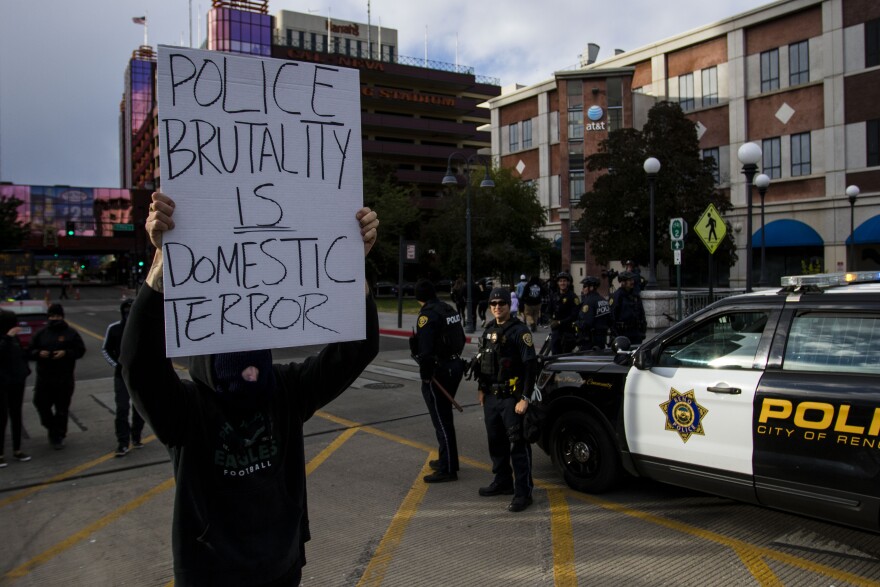This week marks one year since the murder of George Floyd at the hands of police. In this commentary, KUNR Youth Media reporter May Wells shares her thoughts on some of the concrete actions needed to instill lasting change.
Activists finally became the victors as Derek Chauvin was convictedof second-degree unintentional murder, third-degree murder and second-degree manslaughter. After kneeling on George Floyd’s neck for more than nine minutes until he died, he can now face up to 40 years in prison. This is a small step in attempting to reform the police, as well as the justice system. Now, a year after Floyd’s murder, what comes next?
For clarity, police reform is the movement to eliminate police brutality and the racism rooted within the policing force. I want to see two changes. First, I want to see a longer training period for law enforcement. The training period for police is between 10 to 36 weeks in the U.S., according to CBS News. Advocates for police reform want to see required training periods extended. They argue the current standards don’t prepare officers enough for the responsibility of taking someone else’s life. I believe training should be at least one year, and it should include robust training on how to respond to mental health emergencies and how to de-escalate situations.
I’m also passionate about ending the umbrella of protections for police under qualified immunity. The Supreme Court set this judicial doctrine. It can protect police officers who violate civil rights from civil and financial consequences unless those rights are clearly stated in law. For example, a womanwas tased and dragged out of her car by officers for resisting to sign a speeding ticket in Seattle in 2004. She was seven months pregnant and her 11-year-old son was in the car. The case was dismissed by federal judges. Eliminating qualified immunity would increase police accountability because officers [would] not be able to hide behind this principle in court anymore.
Over the past year, lawmakers have taken some steps to reform police behaviors, but there is still so much more that needs to be done.
May Wells is a junior at Spanish Springs High School. KUNR’s Youth Media program partners with the Washoe County School District to train the next generation of journalists.






